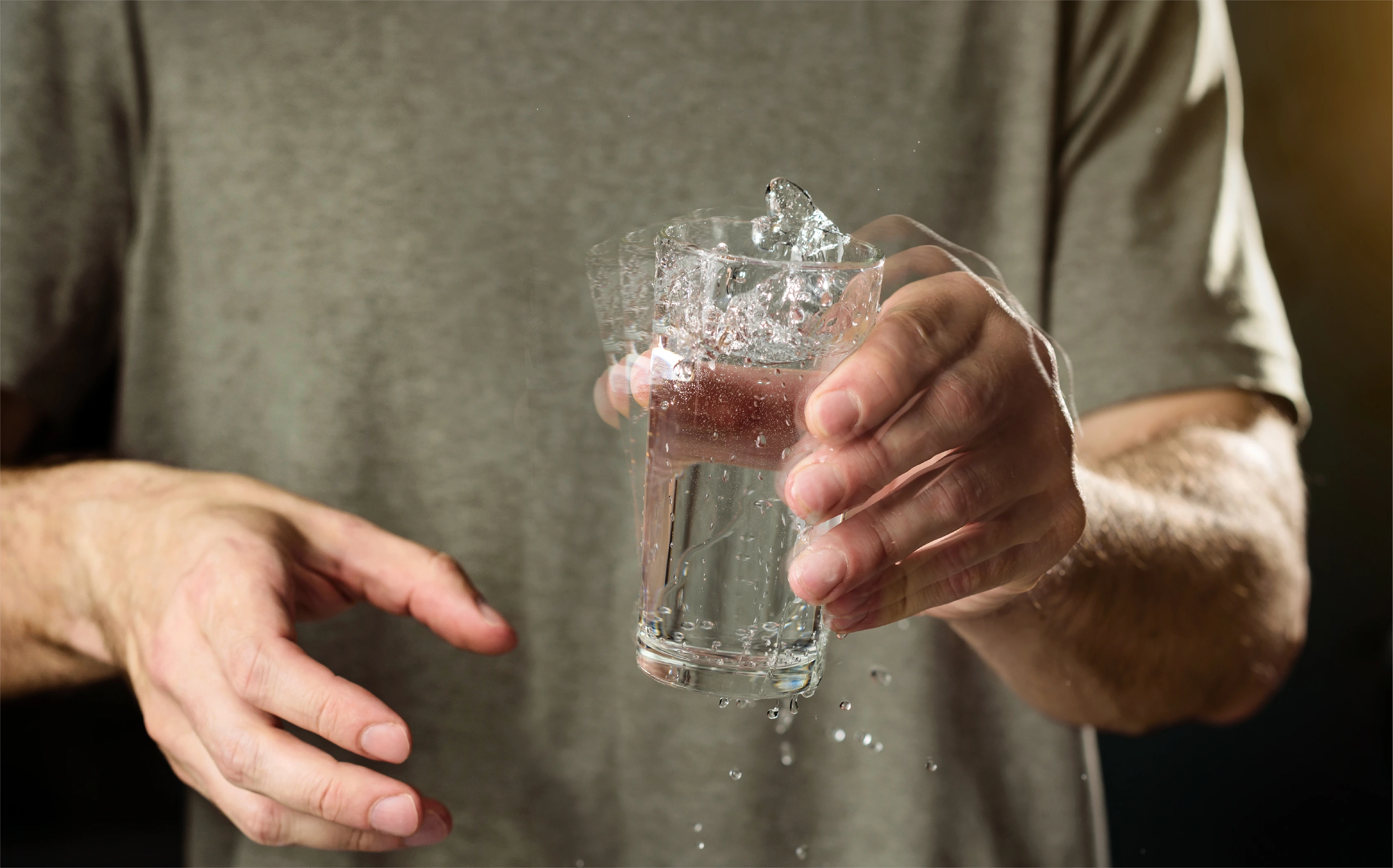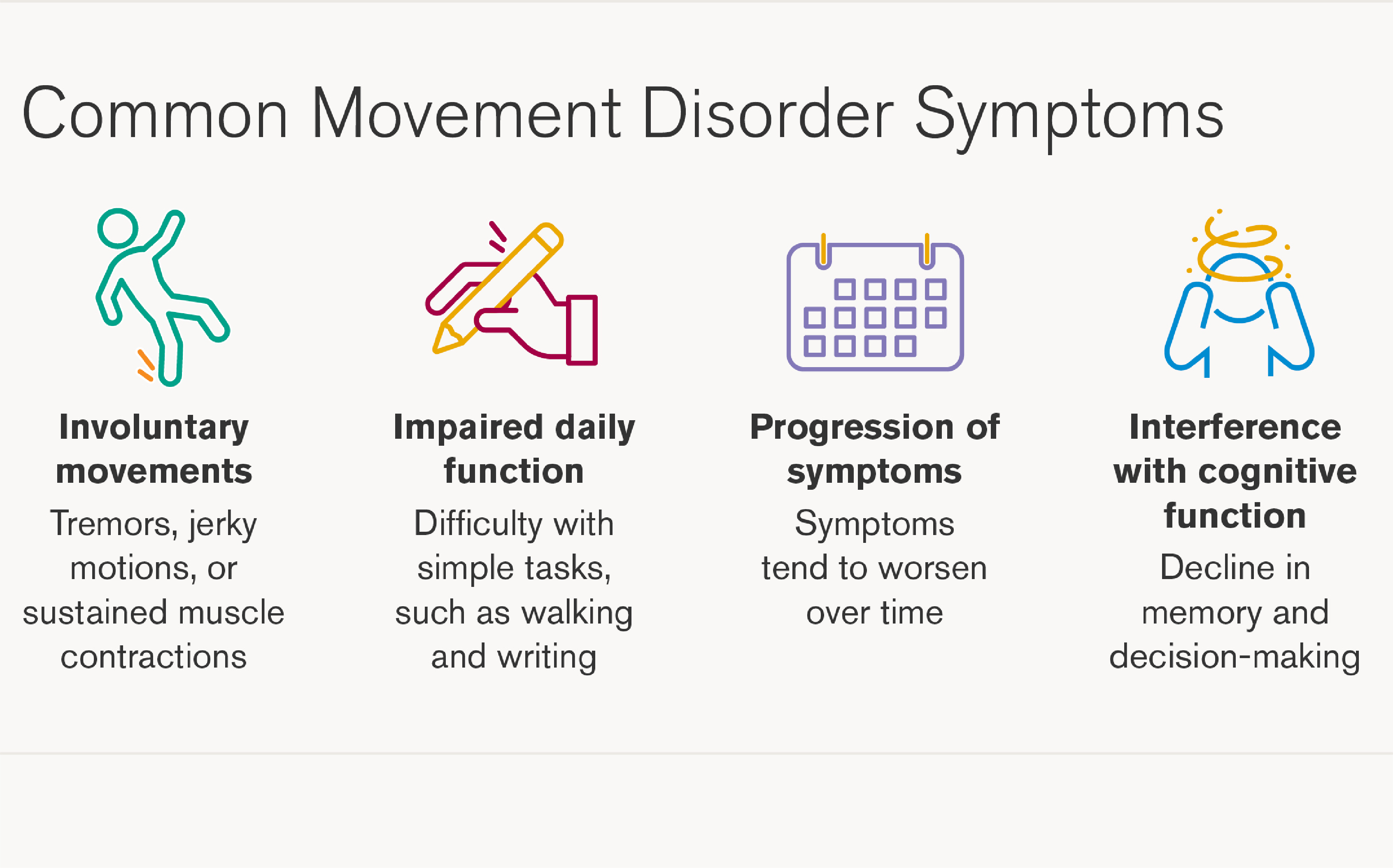
Movement is one of the vital body functions that enable us to walk, write, and eat easily. Others have uncontrollable or bizarre movements due to a set of neurological diseases called movement disorders. Movement disorders can lead to excess movements, jerky movements, stiffness, or slowing down movements, and even simple tasks are challenging.
 What Are Movement Disorders?
What Are Movement Disorders?Movement disorders are brain disorders that make it difficult for an individual to move normally. Some of them result in excess movement (excessive or involuntary movements), while others result in insufficient movement (movement difficulty or stiffness). All these disorders arise because of issues in the brain, nerves, or muscles.
Some movement disorders are mild and are accompanied by slight discomfort, while others can be disabling and severe. If properly diagnosed and treated, the symptoms can be managed and overall quality of life enhanced.
Read Also: Effective Treatments for Movement Disorders
Movement disorders are neurological conditions that affect a person's ability to control their body movements, causing involuntary or abnormal motions. Below are the most common types of movement disorders:
Parkinson's disease is a progressive disorder that impacts movement and coordination. It happens when the brain loses nerve cells that produce dopamine, resulting in slow movements, stiffness, and tremors. Individuals with Parkinson's tend to have trouble walking and balancing.
Symptoms of Parkinson's disease include tremors, slowness of movement (bradykinesia), stiffness of the muscles, and impaired balance and walking. The disease can impact speech and cause mood changes as it advances.
Treatment for Parkinson's involves drugs such as Levodopa, which raise the levels of dopamine in the brain, physical therapy to enhance movement, and, in a few instances, deep brain stimulation (DBS) surgery, which aids in symptom control.
Read Also: How Neurorehabilitation Can Enhance Your Quality of Life?
Essential tremor is a frequent movement disorder that leads to uncontrollable hand, head, or voice shaking. In contrast to Parkinson's disease, which results in rest tremors, essential tremors arise with the execution of activities such as holding objects or writing.
Shaking hands, nodding of the head, or tremors of the voice are symptoms of essential tremor that become worse with activity but better at rest. Essential tremor may render activities such as drinking from a glass or eating with a spoon challenging.
Treatment involves beta-blockers (such as propranolol) and anti-seizure drugs to minimize tremors. In severe cases, therapy or surgery such as deep brain stimulation is required.
Dystonia results in involuntary muscle contractions, causing twisting movements and abnormal postures. It may involve one area of the body (focal dystonia) or more. The involved muscles contract repeatedly, resulting in painful and abnormal movements.
Individuals with dystonia can suffer from involuntary twisting or repetitive motion, stiffness in the muscles, and an inability to hold the normal posture. The disorder might occur in the hands, neck, legs, or even in the whole body.
Treatment consists of Botox injections that relax hyperactive muscles, muscle relaxants, and physical therapy to enhance movement. In severe cases, deep brain stimulation is employed to alleviate symptoms.
Read Also: What is Advanced Neuro Rehab?
Chorea is a disorder of movement that results in sudden, unpredictable jerky movements. It is most often observed in diseases such as Huntington's disease and Sydenham's chorea. The movements may be mild or severe and interfere with a person's ability to carry out daily activities.
Symptoms are involuntary, dance-like movements, impaired balance and coordination, and, in the case of Huntington's disease, mood and thinking ability changes.
Treatment is medications that inhibit dopamine, physical therapy to enhance coordination, and supportive care for the underlying conditions such as Huntington's disease.
Read Also: Best Rehabilitation Centre in Hyderabad
Ataxia is a condition that impairs balance and coordination caused by injury to the cerebellum, the location in the brain that regulates movement. It may be caused by genetic disorders, stroke, or head trauma.
Individuals with ataxia are unable to walk, coordination is affected, they are clumsy, and speech is slurred. With progressive disease, activities such as writing or buttoning a shirt become challenging.
Treatment involves physical therapy to enhance coordination, speech therapy for communication problems, and devices such as walking aids for severe disease.
Myoclonus is an involuntary, sudden muscle jerk that is not under the control of consciousness. It may be due to epilepsy, disease of the nervous system, or metabolic illness such as liver or kidney failure. It may occur either in wakefulness or sleep.
Symptoms are shock-like muscle jerks that are sudden and affect one muscle or more muscles. They affect some at times, whereas others have repeated attacks.
The treatment consists of anti-seizure drugs, muscle relaxants, and the treatment of the underlying cause of myoclonus.
Repeated movements or sounds of abrupt onset over which an individual has no control are tics. If such tics persist for more than one year and return again, it is referred to as Tourette syndrome.
Individuals with tics may exhibit motor tics (like blinking, jerking head, or shrugging shoulders) or vocal tics (like clearing throat, grunting, or saying words). Tics are made worse by stress or excitement.
Treatment is behavioral therapy to manage tics and medication in severe cases. Individuals outgrow their tics in some, but others need to be managed for life.
PLMD results in kicking or arm movement during sleep involuntarily, leading to daytime fatigue and quality sleep. Individuals with PLMD will wake up not refreshed even after a full night's sleep.
Uncontrolled kicking or spasm of the legs at night, which leads to disruption of quality sleep and fatigue.
Treatment involves medication such as dopamine agonists and changing sleep habits to alleviate symptoms.
This condition consists of frequent non-purposeful movements, like hand flapping, rocking, or head banging. It occurs frequently in children and individuals with developmental disabilities, e.g., autism.
Symptoms are frequent body movements which appear non-purposeful but are sensory stimulating. Individuals perform these acts when anxious or when overexcited.
Treatment involves the use of behavioral therapy to decrease repetitive activities and safety during daily activities.
Movement disorders are caused by damage to the brain or nerves, genetic disorders, infections, autoimmune disorders, drug side effects, or vitamin deficiencies. Some of the disorders, such as Parkinson's disease, progress slowly over many years, while others, such as chorea, suddenly develop due to infections.
Doctors use the combination of neurological tests, CT or MRI scan, electromyogram (EMG), and genetic testing to diagnose movement disorders. Tests determine the reason and optimum treatment.
Treatment of movement disorders includes the use of medicine, physical therapy, and lifestyle changes. Drugs like dopamine stimulants (in Parkinson's disease), muscle relaxants (in dystonia), and anti-epileptics (in myoclonus and tics) manage the symptoms.
Physical therapy plays an important role in maximizing coordination, balance, and muscle strength, especially for ataxia and dystonia. Severe cases, however, utilize treatments such as deep brain stimulation (DBS) or the injection of Botox to control uncontrollable movement.
Diet, exercise, and stress reduction function in the same way to treat movement disorders.
Movement disorders may be difficult for daily living, but with the right treatment and early diagnosis, symptoms can be well managed. If you or someone in your family is experiencing uncontrollable movements, tremors, or stiffness, consult a neurologist for proper diagnosis.
With good treatment, therapy, and care, the majority of people with movement disorders can lead active and productive lives. If you are unsure, by no means hesitate to go to the doctor.
Book an Appointment
Call Us09035030623